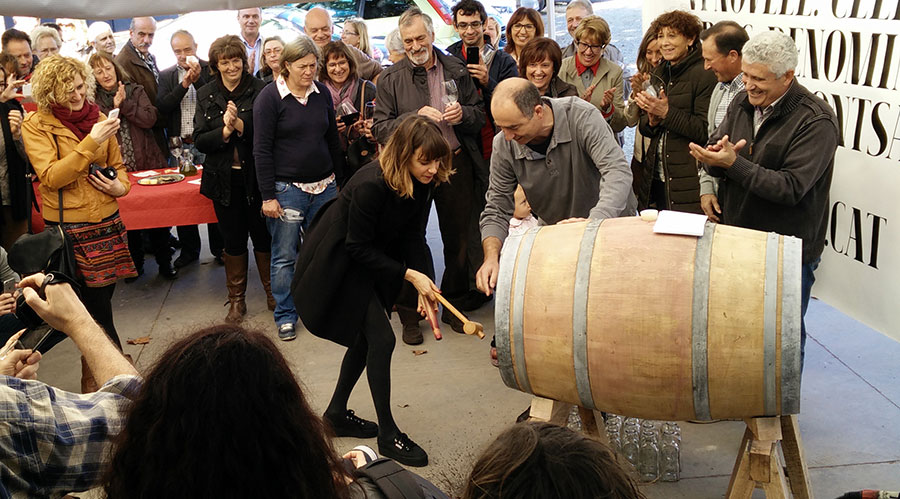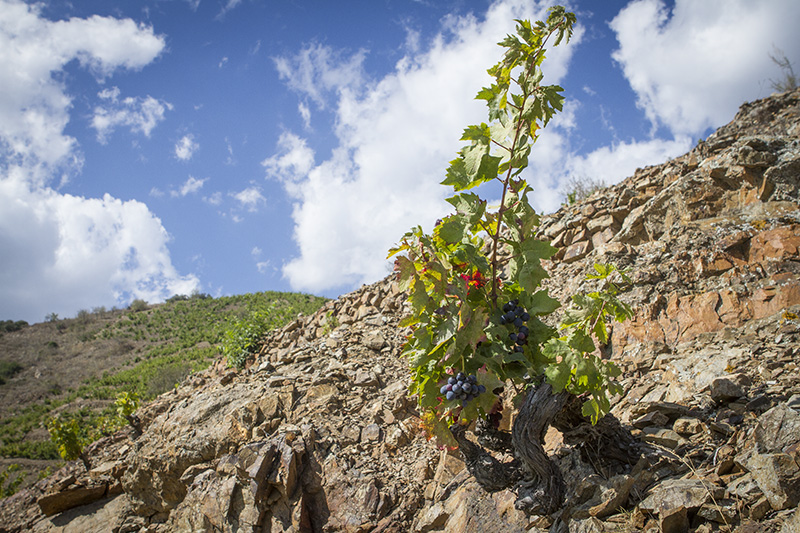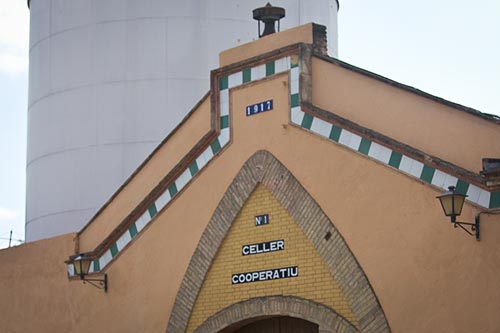
Day Two of our trip to Priorat coordinated by Hostal Sport saw us off to Celler el Masroig which provided for a much, much different visit than we’d experienced at Clos Figueras as they are two very different types of wineries and are even part of two different DOs.
Although it’s in the Priorat county, Celler el Masroig belongs to the newer DO appelation of Montsant. Located in the village of the same name, it is a large cooperative founded in 1917 with an impressive Modernist building. In their nearly 100-year history they’ve expanded their cellar a couple of times, creating an interesting juxtaposition of winemaking styles and techniques for visitors to enjoy. These days they harvest from some 500 hectares of vineyards of their 200+ members and produce millions of bottles a year. This degree of production allows them to have regular tours and events, as well as a shop you can buy a number of products besides their wines — such as the 5L bottle of high-quality Siurana olive oil we rapidly found ourselves in possession of.
They have several different brands like the Solà Fred you often find in wine shops in Barcelona or even in the US, the Finca Cucó or Ètnic. In total, they make 14 different wines out of which we got to taste four or five. The ones we found more interesting were two wines from their Les Sorts brand: Sycar, a blend of Syrah and Carignan (hence the name) and Les Sorts Vinyes Velles, a blend of old-growth Grenache and Carignan with some Cabernet. These wines both have character. They’re not the great, deep wines you can find elsewhere, but they’re still well-defined, enjoyable to drink and they are priced quite well.
Now, I’ve had many a bottle from very large wineries that are quite good. Sure, they lack the details you find in smaller producers, but they do have the ability to make really enjoyable wines. Of course, this is made more difficult when they decide to make use of carbonic maceration.
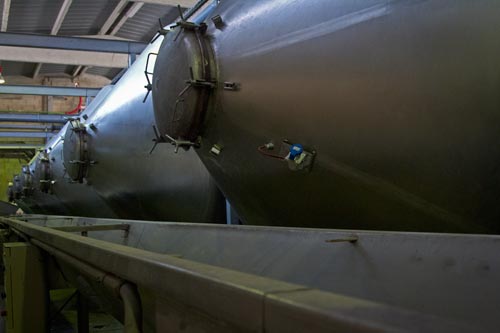
Let me go on the record now to state that I hate the shit out of carbonic maceration. Wineries like to use it to hasten production of their young wines. It’s not something to really show off, but for some reason, the woman leading our tour really took a lot of time to explain it, but when it came down to it, I found their Les Sorts Jove to not be anything I’d ever want to taste in my glass. She said they are almost sold out of it as many of their customers love it, but to me it tastes fake, artificial, and not really like wine. Someday, I hope to taste good wine that’s made with this process, but have yet to experience it and honestly don’t see the need given that the “natural” processes have worked well to date.
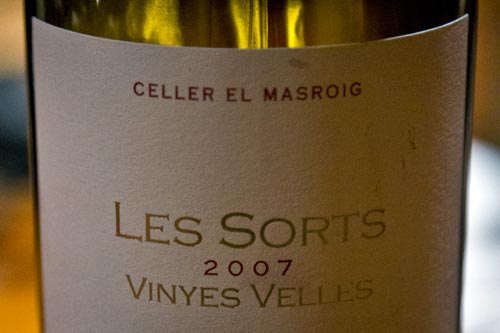
I’m probably a bit frustrated on this production method they use as it was one long part of a very long tour in the middle of a hot July day that also involved a lot of standing. It should be noted that they’re not the only ones guilty of this and I’ve often wondered why touring wineries involves so much standing, especially not in the cool, relaxing cellars.
The other people we were with were originally from the Rioja region and had been on many winery tours before, so they also seemed to know a decent degree about wine and so it was very frustrating to spend 20 minutes having the bottling machine explained to us, which can be watched for 30 seconds to completely understand how it functions–even if you haven’t seen one before. Again, this is something many wineries are guilty of as they probably like to show off their most expensive machinery to visitors.
I’m not really sure what they’re wanting to accomplish with their tours, but they seriously need to truncate the explanations and spend more times with the wines or sampling the olive oils which were delicious as all hell. These activities are made even more enjoyable by comfortably sitting in their nice underground tasting room in the older part of their cellar which we quite liked. All of this would probably have left a better flavor in my mouth than getting stuck on the damned carbonic maceration.
